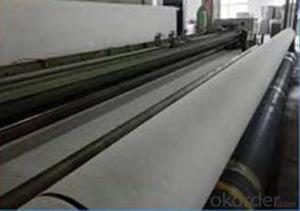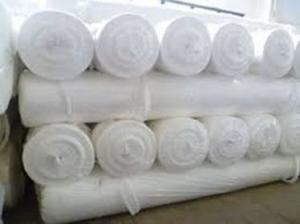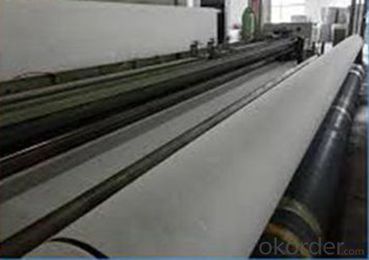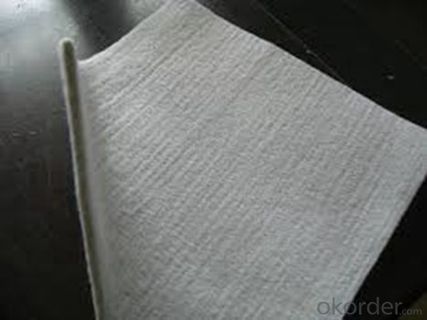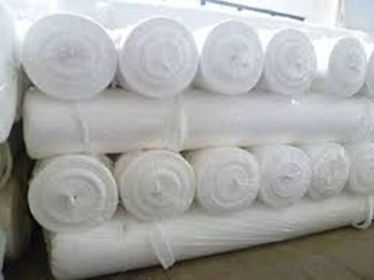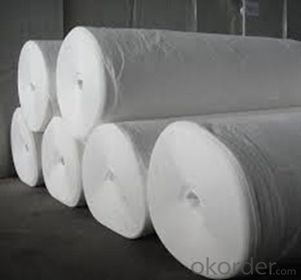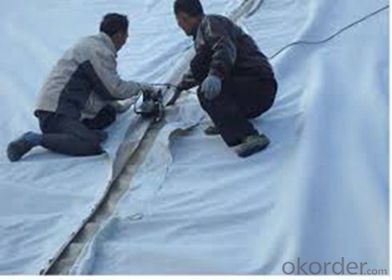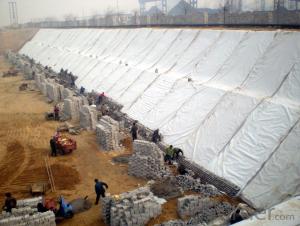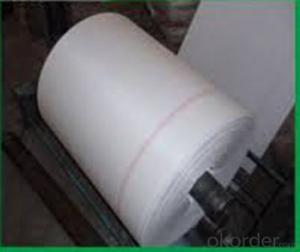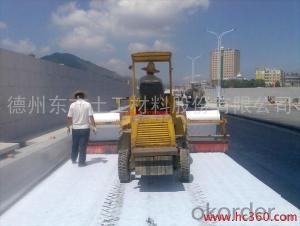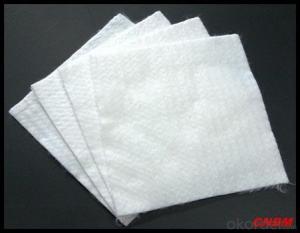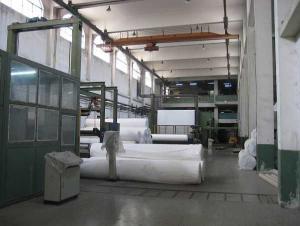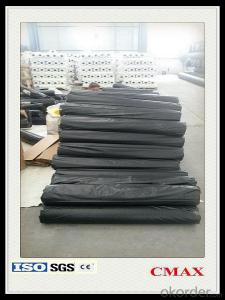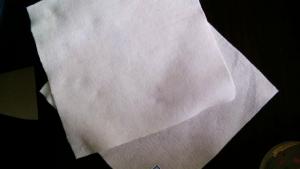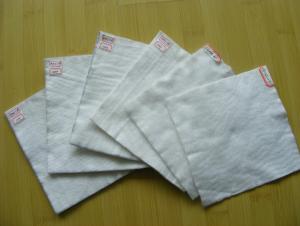Woven Non Woven Geotextile Needle Punched & Geotextile Non-Woven for Road Construction
- Loading Port:
- China main port
- Payment Terms:
- TT OR LC
- Min Order Qty:
- 5000 m²
- Supply Capability:
- 1000000 m²/month
OKorder Service Pledge
OKorder Financial Service
You Might Also Like
Specification
Property:
1.super high strength,ultralight,high resistance
2.Resistance to chemical erosion,excellent water resistance
3.Abrasion resistant
4.Excellent anti-aging and anti-UV property,good weather fastness
Application:
1.Separation and stabilization in road and railway construction
2.Reinforcement project
Photos:
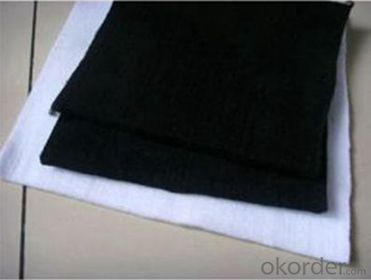
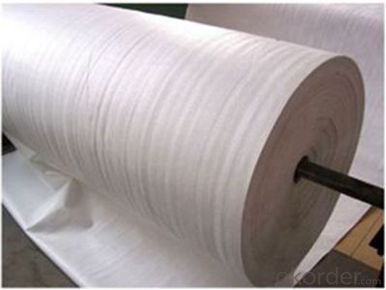

Packaging & Shipping
Packing: PLASTIC FILM INSIDE, AND WOVEN BAG OUTSIDE
Shipping: About 15 days after receipt the deposit
geotextile fabric
permeability,filtration,easy for construction
ISO and CE certificate
Good quality and competitive price
Our Service
Quality assurance
1.On a regular basis or as per your request,we entrust national testing agencies to conduct quality inspections
2. Strictly in accordance with the ISO9001-2008 international quality system standard,we monitor and manage the whole process throughout production,quality testing,and measurement to ensure product quality
3. For quality-related construction delay or substandard construction(except for damage or losses due to customer’s responsibility or irresistible natural disasters),we have refunding,replacement,and repair services.We will respond to customers’ feedbacks on quality issues within 24 hours.
After-sales service
1.In order to provide customers with comprehensive technical support,we will provide technical and other related information upon request in a timely manner.
2.In required,we will appoint specialized technicians to the construction site to give technical trainings to construction people,and offer technical guidance throughout the whole construction process.
3.For damage due to shipment and delivery,after we receive the complaint,we will check the issure through provided pictures and videos.If our responsibility is confirmed,we wil offer free replacement.
4.When the construction is completed,as your request,our technical staff may participate in the final acceptance.
FAQ:
Q: What kind of payments does jenor support?
A: T/T, L/C, Cash are accepted.
Q: Do you charge for the samples?
A: Accordeing to our company policy, the samples are free, we only charge the freight fee. And we will return the freight fee during the next order.
Q: Can you produce according to customers' design?
A: Sure, we are professional manufacturer, OEM and ODM are both welcome.
Q: Do you have other products?
A: Yes, please check the pictures:
- Q: What are the different methods of geotextile installation?
- Some of the different methods of geotextile installation include trenching and backfilling, direct placement, and anchoring. Trenching and backfilling involves excavating a trench, laying the geotextile in the trench, and then backfilling it with soil. Direct placement involves simply placing the geotextile on the intended surface without any additional steps. Anchoring involves fixing the geotextile to the ground using various anchoring techniques such as stakes, pins, or sandbags. These methods can be chosen based on the specific project requirements and site conditions.
- Q: What are the key factors affecting the hydraulic conductivity of geotextiles?
- The key factors affecting the hydraulic conductivity of geotextiles include the porosity of the fabric, the thickness and density of the fibers, the weave or structure of the fabric, the surface roughness, and the presence of any clogging or fouling agents.
- Q: Can geotextiles be used in bridge abutment construction?
- Yes, geotextiles can be used in bridge abutment construction. Geotextiles can provide reinforcement, separation, and filtration functions in bridge abutments, helping to improve overall stability and prevent soil erosion.
- Q: On the road where the laying of geotextiles should be how to shop
- Like roadbed fill, fill the junction and so on can be shop, a layer of a layer of shop, fixed good.
- Q: What are the potential drawbacks of using geotextiles?
- Some potential drawbacks of using geotextiles include the high cost of materials and installation, limited durability in certain environments, potential for clogging due to fine particles, and difficulty in recycling or disposing of used geotextiles. Additionally, improper installation or selection of geotextiles may not provide the desired results, leading to project failure or inefficiency.
- Q: How are geotextiles used in slope stabilization?
- Geotextiles are used in slope stabilization by providing reinforcement and erosion control. They are placed over the soil surface or within the slope to prevent soil movement and erosion. Geotextiles help to increase the stability of the slope by distributing the load and reducing the risk of landslides. Additionally, they enhance the drainage capabilities of the slope, reducing the pressure on the soil and minimizing the risk of erosion.
- Q: What are the key factors affecting the puncture resistance of geotextiles?
- The key factors affecting the puncture resistance of geotextiles include the material composition, thickness, and density of the geotextile, as well as the shape, size, and velocity of the puncturing object. Other factors such as the installation method, environmental conditions, and the presence of any protective layers also play a role in determining the puncture resistance of geotextiles.
- Q: What is geotextile? Geotextile is what
- Geotextile, also known as geotextile, it is made of synthetic fiber through acupuncture or woven from the permeability of geosynthetics. Finished cloth for the cloth, the general width of 4-6 meters, the length of 50-100 meters. Geotextile is divided into a woven geotextile and non-woven geotextile. Geotextile has excellent filtration, drainage, isolation, reinforcement, anti-seepage, protection, with light weight, high tensile strength, good permeability, high temperature, anti-freeze, anti-aging, corrosion resistance characteristics. Geotextile is one of the geosynthetics, the application of geosynthetics originated in the fifties of the twentieth century, the domestic geotextile is one of the national eight five plan, China promulgated in 1998, "geosynthetics staple fiber Acupuncture non-woven geotextile "(GB / T-1998) standard, the current geotextile has been widely used in many areas.
- Q: Geotextile belongs to what industry
- Geotextile, also known as geotextile, it is made of synthetic fiber through acupuncture or woven from the permeability of geosynthetics. Geotextile is a new material geosynthetics which one, the finished product for the cloth, the general width of 4-6 meters, the length of 50-100 meters. Geotextile is divided into a spinning geotextile and non-woven filament geotextile. Geotextile manufacturers, for your answer
- Q: What are the advantages of using geotextiles in stormwater management systems?
- Geotextiles offer several advantages in stormwater management systems. Firstly, they act as a filter, preventing the migration of fine particles and sediment, thus reducing the risk of clogging and maintaining the efficiency of drainage systems. Secondly, geotextiles provide erosion control by stabilizing the soil and preventing its displacement, thereby protecting against soil erosion and maintaining the integrity of the stormwater infrastructure. Additionally, geotextiles can enhance water quality by facilitating the removal of pollutants through filtration and acting as a barrier against their infiltration into groundwater sources. Lastly, geotextiles are cost-effective and easy to install, reducing construction time and expenses. Overall, the use of geotextiles in stormwater management systems promotes efficient and sustainable water drainage while minimizing environmental impacts.
Send your message to us
Woven Non Woven Geotextile Needle Punched & Geotextile Non-Woven for Road Construction
- Loading Port:
- China main port
- Payment Terms:
- TT OR LC
- Min Order Qty:
- 5000 m²
- Supply Capability:
- 1000000 m²/month
OKorder Service Pledge
OKorder Financial Service
Similar products
Hot products
Hot Searches
Related keywords
